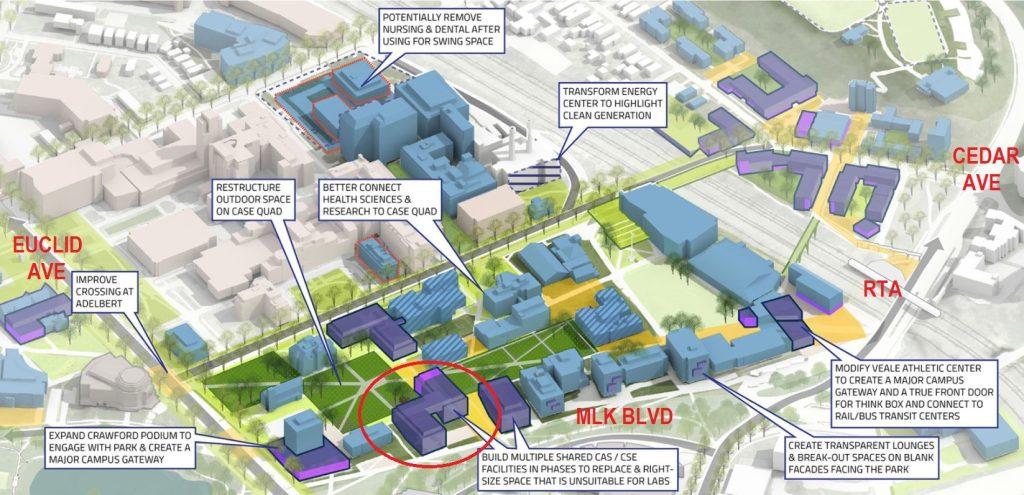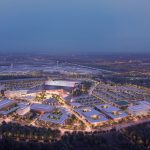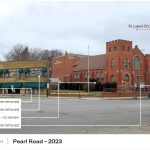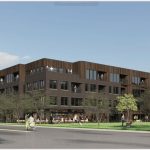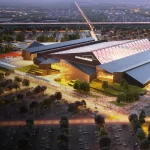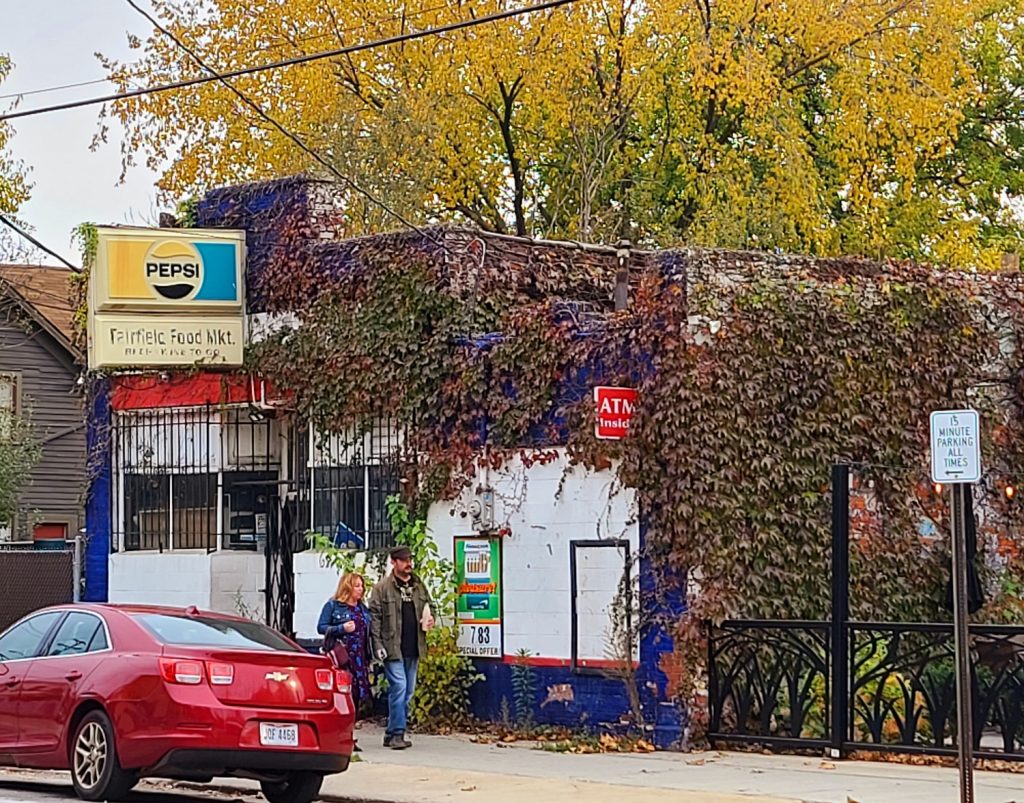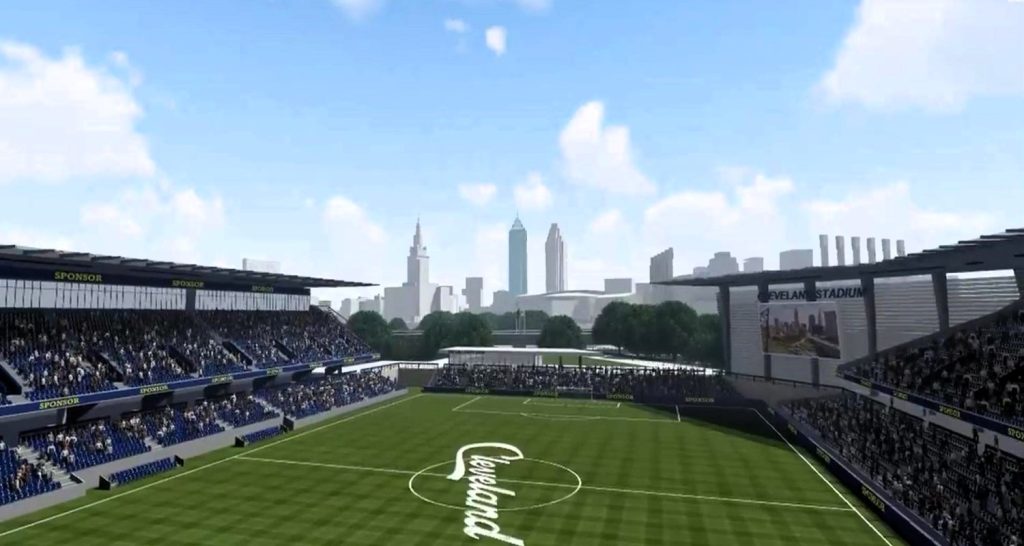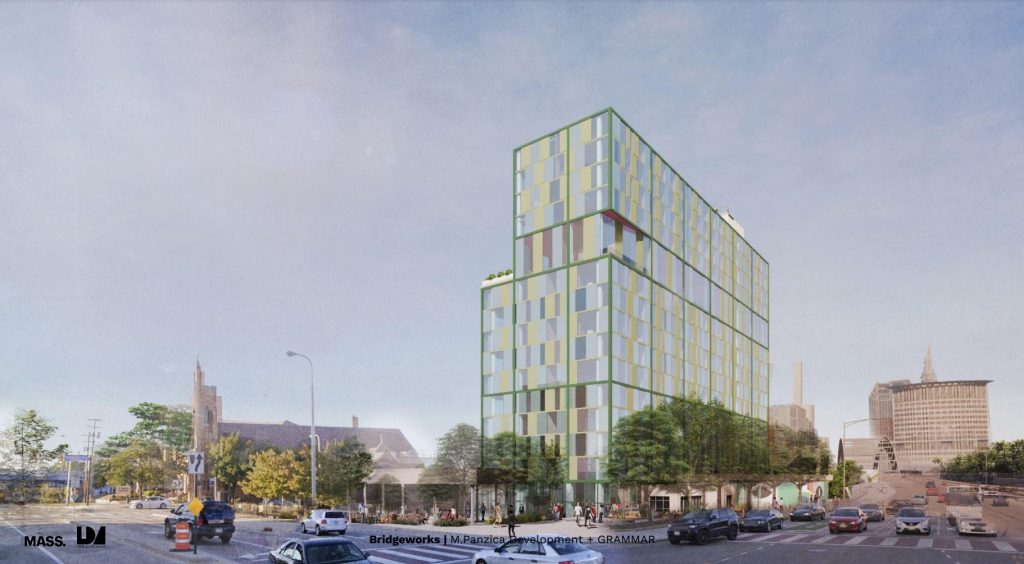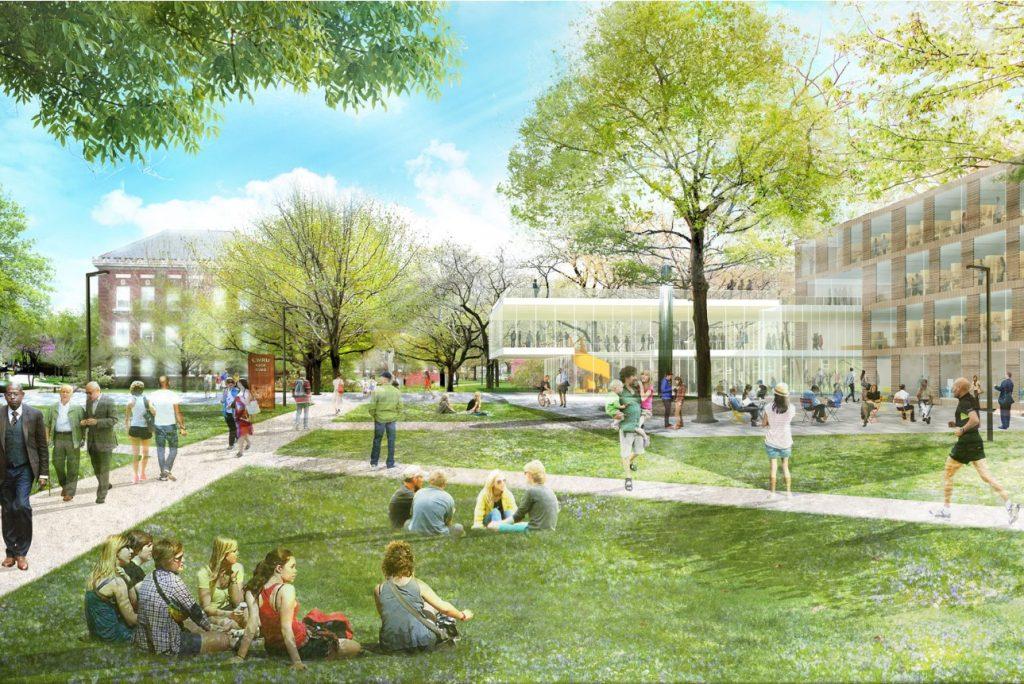
A vision for the Case Quad as shown in Case Western Reserve University’s 2018 masterplan. The university’s proposed new research center, now envisioned to be larger than what was proposed four years ago, is at right. This view looks southeast across the Case Quad (Sasaki). CLICK IMAGES TO ENLARGE THEM
Research center would replace Yost Hall
At an alumni event earlier this week, Case Western Reserve University President Eric Kaler announced that the university has begun philanthropic fundraising to construct a new $300 million Interdisciplinary Science and Engineering Building. The new research facility was part of the university’s campus masterplan that was completed in 2018 but various components of it, including the expanded South Campus Residential Village now under construction, were delayed by the pandemic.
A university spokesperson confirmed this week that university is pursuing the 250,000-square-foot research center project and that it would be constructed on the current site of Yost Hall, located at 2049 Martin Luther King Jr. Blvd. on the Case Quad. Yost Hall, built in the 1950s a dormitory for the Case Institute of Technology, is currently used as administrative building for the university. It will be demolished for the new research center.
The scale of the project can be appreciated by the size of Yost Hall — a four-story building but has a basement level exposed on the MLK side by a change in the landscape’s elevation. Yost measures about 50,000 square feet, or roughly one-fifth the size of the proposed research center. In CWRU’s masterplan, the research facility was proposed to be only 173,000 square feet. But growing demands for collaboration between the College of Arts and Sciences and the Case School of Engineering as well as a need for more interdisciplinary teaching and research pushed the scale higher.
Another factor appears to be the university’s early in success in acquiring funding for the large-scale construction project. Kaler said the university already has nearly half of the funding in hand or pledged which has given CWRU greater confidence in pursuing a larger project and for discussing the matter publicly. However, some details like a desired construction start date are too early to know.
“Philanthropy will play a major role in funding, but that’s as specific as we can get at this time,” said the university spokesman who did not want his name published. “I don’t have any details to share about timing, just yet.”
He also acknowledged that the research center was a key part of CWRU’s efforts to increase externally funded research from $400 million per year to $600 million per year over the decade. A driver of the research center and its expanded budget is the Cleveland Innovation District — an initiative of JobsOhio and multiple local partners including CWRU. The university’s Next Generation Health Care initiative, a beneficiary of innovation district funding, will build on CWRU’s biomedical technologies and drug development to advance diagnosis and treatment for cancer, cardiac, neurological and infectious diseases.
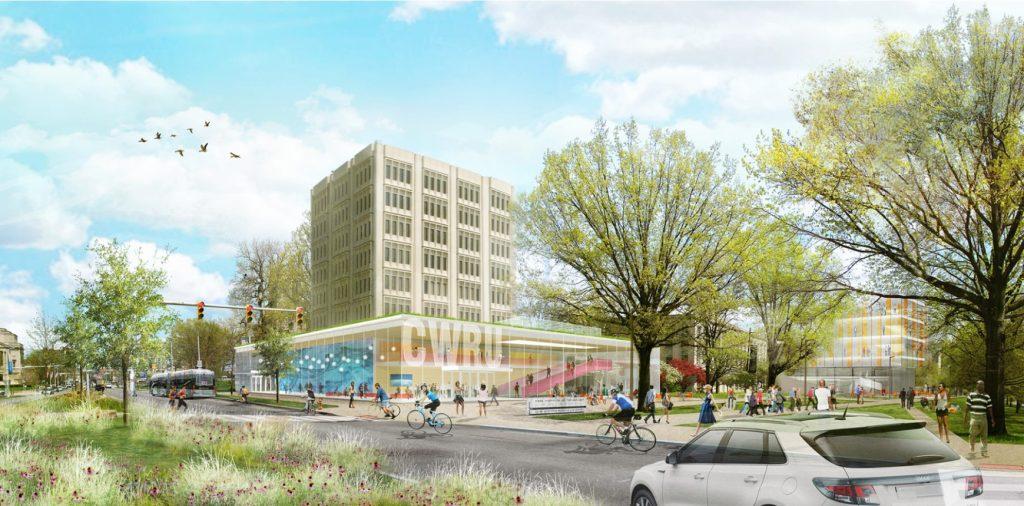
Another conceptual rendering from the university’s masterplan has this eastward view along Euclid Avenue at Martin Luther King Jr. Boulevard. The planned research center is seen through the trees at right. It, like the proposed glassy podium for the Crawford Tower, were offered to extend the Case Quad up to MLK and create a street presence for the university along that major thoroughfare (Sasaki).
And, one year ago, the Clean Energy Smart Manufacturing Institute (CESMII), funded by the U.S. Department of Energy, selected the Institute for Smart, Secure and Connected Systems (ISSACS) at Case Western Reserve University to lead a Smart Manufacturing Innovation Center (SMIC) in Cleveland. The effort is accelerating the adoption of smart manufacturing by integrating advanced sensors and data platforms to radically improve manufacturing.
The Case Quad was chosen as the site for the new research center because it has historically been the location for engineering, sciences and technology. This section of the campus started as Case Institute of Technology before the 1967 merger with Western Reserve University. But the Case Quad still has “fragmented and disconnected architecture and landscapes that should be restructured to create integrated, intimate, useful open spaces connected to adjacent districts as well as the surrounding community,” according the CWRU’s masterplan.
“Plans for a new Interdisciplinary Science and Engineering Building will allow for a series of internal renovations and space moves that will result in the appropriate pairing of programs to their highest and best use,” the masterplan continued. “The new spaces are imagined as both social and academic hubs that will activate the quad in the evenings, improving the vitality and safety of the space. The research space added with the new building will allow the university to retire or repurpose outdated labs and classrooms in other buildings.”
END
Read more latest news
- Haslams announce Brook Park stadium-area development partner, updated plans
- Old Brooklyn structures OK’d for demolition
- Shoreway Tower has construction in view for 2025
- North Collinwood ‘historic’ modular townhomes OK’d
- Gordon Square development wins approval
- Haslams say proposed Browns’ Brook Park stadium, development to net $1.2 billion in benefits per year

